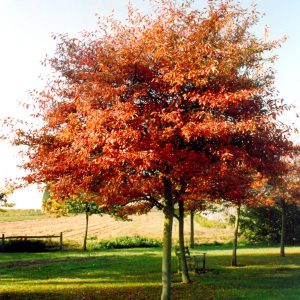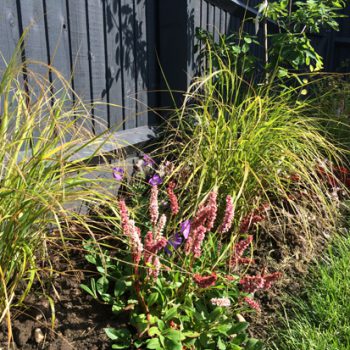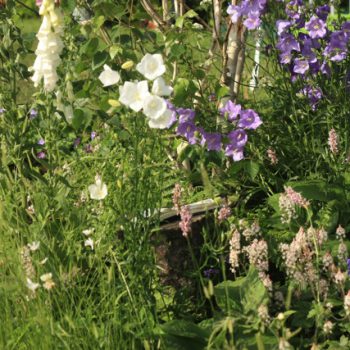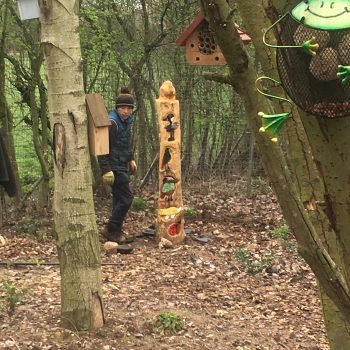The results of the latest RSPB Big Garden Birdwatch showed unsurprisingly that the number of birds visiting our gardens this winter fell slightly.
The mild weather has meant natural food sources have been more abundant, and our efforts to encourage feathered friends to our seed feeders have been less successful. I have in the past spent a fortune on bagged seed, tried desperately to thwart the attacks of squirrels on the nut feeder, and Googled countless novel ways of persuading wildlife that my garden is the one they should pick to visit. Yes, MINE birdies ARE YOU LISTENING?!!
Trouble is, nature doesn’t necessarily pay much attention to a psychedelic green luxury designer hanging bird spa with en-suite nesting facilities, when natural food sources and habitats are at hand. Our goal therefore is to turn our gardens into the number one all-inclusive tourist destination for birds and animals, where the accommodation is terrific and the food exceptional. However as a garden designer and wildlife lover, finding the balance of attracting wildlife while addressing the aesthetic and practical needs of homeowners and families is all part of the challenge of my work, especially in smaller gardens.
One of the big draws for birds is most definitely trees, and I would encourage anyone to have at least one tree in their garden however small the space. There are some ideal trees for small gardens that have ‘triple impact’, combining blossom in spring, followed by berries or fruit, plus stunning leaf colour come autumn. In a limited space, Amelanchier lamarkii (right) is pretty hard to beat. After a great show of spring blossom, the berries are a great food source for birds, and the colour in autumn is just beautiful. Sorbus aucuparia, or our native Rowan, is also excellent for birds. Evidence shows that birds prefer red berries so try ‘Sheerwater Seedling’ for an irresistible feast. Yellow berried (Sorbus ‘Joseph Rock’) and white berried (Sorbus cashmiriana) species won’t be so tempting, with the latter being the last pilfered.
Neither of these trees will dominate your garden, and will sit happily in a mixed border, or as a stand alone specimen bringing structure, colour, dappled shade and of course, fantastic wildlife appeal. Their importance can’t be underestimated in creating a corridor of sustenance in more urban areas, and a well chosen tree will enhance any garden immensely. So for the price of a sack or two of bird seed, you could plant a tree, and know that for years and years to come you will have a constant stream of avian visitors to your garden.
So what else can you do? Having stripped the trees bare of fruit, birds can be persuaded to extend their vacation by planting flowers with attractive seedheads such globe thistles, teasles, echinacea, asters, rudbeckia, alliums and of course sunflowers, to provide a longer supply of food through the tougher months when supply is scarce. Rather than chop plants down in winter, leave them to die back naturally. Not only will the seed be preserved for the birds, you will be treated to gorgeous wintery hues of browns that will look stunning crystallised by frost.
With the addition of a water source, coupled with some fruiting shrubbery such as Cotoneaster, or the fabulous hawthorn Crataegus monogyna to add to your eco-larder, and climbers such as ivy or honeysuckle for nesting, you may find the birds flocking to take up residence permanently! In return for your hospitality, they will repay you by eating slugs, aphids and other pests that make gardening life more challenging. Sounds win-win to me!
If you have any wildlife tips to share please feel free to comment below!





